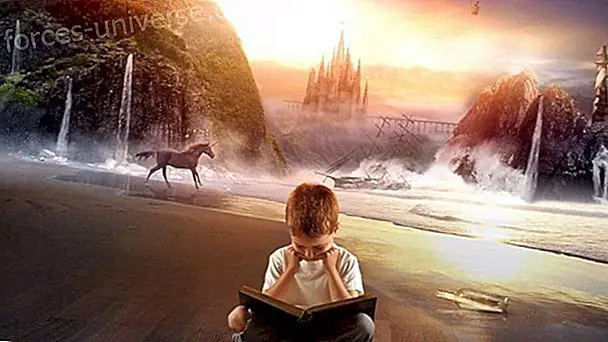
Education must change its traditional pedagogical model, which entails a fragmentary or unilateral vision, given that the student sees only one aspect, that is, the intellectual one.
Schools must adapt to a new educational approach, which must be comprehensive. This means that the aforementioned Approach must contemplate the student from a multidimensional view. What does that vision consist of? Well, the answer is: consider the student as a totality in which the parts are integrated, and not as a repository of conceptual notions. Now, another question arises: What are the parts of the which is spoken here ?, well: the student has several dimensions (or parts that are integrated) that are: Physical, Mental, Emotional and Spiritual, then from the perspective of Holistic Pedagogy is no longer considered (the student) as a recipient on which to pour data and information, or as a PC hard disk on which to store files.
What is the new educational approach ?, because it is the Holistic Pedagogy, whose approach is to see the student as an integrated unit in which the parts or dimensions are in permanent interaction, because there is interdependence between them. In no way, in the context of this approach, the intellectual aspect of the child's or young person's education is ruled out, since it is essential to develop and cultivate the exercise of abstract thinking and reflective capacity, but that aspect is complemented other dimensions or parts, because it is not about splitting or separating, but of joining and integrating, so that the student is considered as a unit in which the aforementioned dimensions are present.
Now, what is the role of the school ?: because the school, in the context of the new construction of the Holistic Pedagogy current, must be [1] “biointegral”, in the sense that it “bases the teaching techniques in emotions without neglecting the intellect ”, that is to say that intellectual knowledge must be part of the formative process, but it must not be the only one that totally monopolizes the process of transmission and reception of knowledge in the classroom.
As for the role of the teacher, it must be said that he must be a guide, an animator of the educational process, an information facilitator, should help the student in the undertaking of his search for data, according to the emotional and cognitive interests of the latter. The teacher no longer imposes his knowledge, as if it were an unquestionable dogma, but he is a counselor, [2] he has a non-directive role in teaching, since he is a guide, he accompanies the learning process (he does not direct it).
The student is no longer a passive receiver of information, but is an active protagonist of his own learning process, participates at all times, raises questions, doubts and concerns, and the teacher guides him, guides him in his search for knowledge.
Holistic Pedagogy does not pose a criticism directed at traditional educational practices, but rather a transformation and renewal of an educational scenario that is presented as complex, because today's student is a different subject from the past, because it is as when colloquially It is said: "The boys of now are not like those of before", and this is so because the children and young people of this new stage of humanity present another vibration (some scholars call it indigo vibration, which those children have and young people who have a high evolutionary level, whether from the spiritual, affective, cognitive, etc.) This also has a contractor: the classrooms are violent, the students have many levels of aggressiveness, and this happens because
they feel that the school does not offer them a more enjoyable possibility to learn, and then they reveal themselves to the system, from violence, (and violence is not justified in any way, because it is rejected) because an Education is needed to teach non-violence, and that is achieved through Holistic Pedagogy, which rejects practices of violence towards human beings, because it postulates values such as Peace, Harmony, Love. Of course, children who have Indigo Vibration do not exercise the violence, but it is also necessary to raise that counterface that was discussed here, since from the Holistic Pedagogy it can also contribute to remedy the violent and bloody conflict that is lived today in the aulic space.
In summary: Holistic Pedagogy has a multidimensional view of the student and its approach is to see the student as a whole that has parts that integrate and complement each other (well, there is a reciprocal relationship between them), in clear contrast with a fragmentary vision consisting of appreciating the student from a single and unique dimension (which is the intellectual one), with the supremacy of this one over the others, because all the dimensions (Physical, Mental, Emotional and Spiritual), in Holistic Pedagogy, they have the same degree of importance, since none is hegemonic, they all have the same relevance.
Finally, today's challenge is to bet on a renewal of complexity in school, as this is achieved by applying a new format, a new educational style, which is Holistic Pedagogy, always with a purpose: That both students and teachers They can fruitfully approach the didactic act (teaching and learning), to increase the performance of students not only from the acquisition of intellectual skills and knowledge, but from the dimensions mentioned here above. The challenge is already formulated, it depends on the will of each actor to accept it (or not)…
Luis Alberto Russi Gerfó.
Bachelor of Education.
E-mail:
Web: www.portalholistico.com.ar
www.facebook.com/russi.gerfo
[1] Paymal, Naomi: Pedagogy 3000.
[2] Rogers, Carl: Non-directive teaching.
Luis Alberto Russi Gerfó.
Bachelor of Education.
E-mail:
Web: www.portalholistico.com.ar
www.facebook.com/russi.gerfo
[1] Paymal, Naomi: Pedagogy 3000.
[2] Rogers, Carl: Non-directive teaching.






